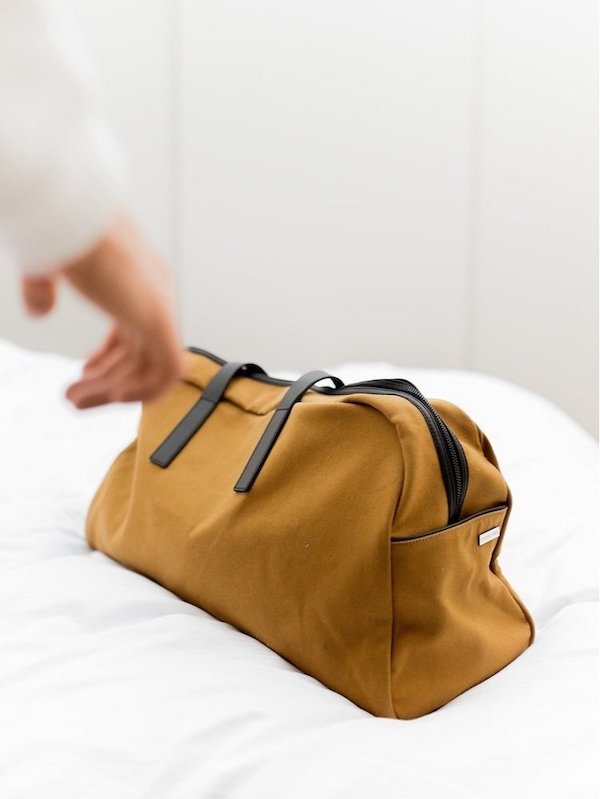
Is It Possible To Prepare For Emergencies—Without Panic?
Emergency Preparation Can Be Scary.
I’ve lived in earthquake territory for years with no emergency kit, aside from a single dusty gallon of water and a smattering of old, unsticky band-aids. When I moved apartments and found I had one whole extra-tiny closet, I realized I could finally update my emergency plan (because it’s never too late, until it is).
“Deciding not to be prepared because it’s too scary is the worst way to be prepared. ”
The research soon spiraled me into a panic—how many MREs (meals ready to eat) do I need? When they run out, will I need a bow and arrow for hunting? Will I soon be tanning my own leathers to wear as satchels in the new society? I went from wanting to be prepared for an emergency situation to living in a post-apocalyptic hellscape faster than I’d care to admit.
But deciding not to be prepared because it’s too scary is the worst way to be prepared. While it’s intimidating, and it’s so much nicer to never think about disasters, sickness, or other situations that call for hunkering down or evacuating, having a plan can offer us peace of mind.
Here’s how I’ve been preparing my family for whatever may—or may not—lie ahead, without freaking completely out.
1. Research your needs and create a list.
Everyone’s emergency needs will be different based on location, who lives in the household, and each person’s health status. For me in Southern California, blizzard preparation is less of a priority than wildfire evacuation orders. Even then, my plan in the city may look different than those in more rural settings.
“Everyone’s emergency needs will be different based on location, who lives in the household, and each person’s health status.”
To start, you can search your current location on FEMA’s website to get information about disaster declarations, current and past, to get familiar with what kind of events you can prepare for. Then, sit down with the members of your household to create a list of needs (and also wants) for your emergency plan and preparation kit. If you have children, FEMA recommends getting them involved so they feel confident if an emergency occurs.
Ready.gov recommends a three-day supply of non-perishable food and several days’ worth of water (one gallon per person, per day). If you don’t have room for large amounts of bulk foods, your MREs can be a storage-friendly option. Good To-Go makes gluten-free and vegan MREs, and the US-based team is led by a professional female chef.
Other items you may want to consider adding to your emergency list include:
Medications (discuss options for ordering extra prescriptions with your doctor)
First aid kit
Diapers, wet wipes, and baby formula if you have young children
Pet food and supplies
Flashlights and batteries
Candles and matches
Extra phone chargers (you can even find solar-powered USB chargers)
Personal hygiene and menstrual care supplies
Extra pair of clothing that is climate-appropriate (don’t forget underwear!)
A hand-crank or solar powered radio with access to NOAA weather radio
A list of emergency contacts
A map of your area with addresses of the closest emergency service addresses like hospitals and fire stations
Essential documents like insurance, birth certificates, passports, etc.
Spare tank of gas (if you have a safe place to store it)
Comfort items, if possible, such as board games, books, or instant coffee
You’re off to a good start! Pat yourself on the back and move on to the next step—actually gathering the items.
2. Gather your emergency items.
While you’ll want to have several days’ worth of essential supplies to start with, you can also create your kit gradually and as your budget allows. Add one item to your weekly grocery list, such as an extra can of tuna, a gallon of water, or a pack of batteries. (Just remember to be mindful and not buy out all the TP—other people have immediate needs, and panic hoarding does more harm than good.)
“Having easy access to all your essentials during an emergency can save you time and alleviate anxiety.”
You can find many emergency items at larger outdoor retailers like REI, but be sure to check out local gear shops, too! Purchasing secondhand is a great option (or searching a “buy nothing” or freecycle website). Just be sure to test any supplies and verify they’ll work in an emergency.
Once you have what you need, create a storage plan that works for you and your household. Having easy access to all your essentials during an emergency can save you time and alleviate anxiety. Here are a few things to keep in mind:
Keep related items together, such as batteries and flashlights or canned food and manual can openers.
Have water- and/or fire-proof storage for important documents, and make sure they’re batched together in case you have to grab them quickly.
In case of evacuation orders, have a pre-packed bag with a change of clothes and essentials ready.
Establish thoughtful short-term and long-term food storage.
3. Have an emergency plan.
You have your kit—but do you know what to do in an emergency? Having a plan can help keep everyone safe. Having answers to questions like the ones below before anything urgent occurs can offer you peace of mind and assurance.
Depending on where you live, consider the following:
Which room is safest in case of a tornado? Where do you take shelter during an earthquake?
If you must evacuate, which roads will be safest and most efficient to avoid traffic? Where will you go?
If you and your family get separated, where will you meet up? How will you get back in touch if communication is lost?
How do you get to the nearest hospital or fire station?
Additionally, consider alternative ways you and your loved ones can set yourselves up for success. Go camping, brush up on basic survival skills, or learn how to cook food from complete scratch. (This can also be a fun bonding activity together!)
If you have children, make a game of knowing street names in your neighborhood and practice routes to safe locations. Practice home evacuation, fire safety, and “stranger danger” with them so they can recognize early warning signs.
4. Take regular inventory & review your plan bi-annually.
New family members, different neighbors, or updated weather patterns can change how you approach emergency planning. That’s why it’s valuable to evaluate your supplies and plan every six months and review any new recommendations for your area. This is also a good time to go over your family’s plan and add or grow precautions based on age-appropriate capabilities. (Try this Ready Kids site that features emergency prep games and resources.)
And, of course, be sure to use up and replace supplies before they expire. Products such as dry or canned beans are handy to keep at the ready and can be used in everyday meal prep as they near the end of their shelf life.
5. Cultivate a healthy mindset.
All of this can be pretty heavy, which is why we can support ourselves with a measured mindset. You are preparing for an emergency—not causing or inviting one to happen—and every small step you take can make a significant difference down the line.
Perhaps this looks like preparing for the worst, but also consider other situations that feel less intimidating—or more likely—like lengthy power or internet outages (the horror!), difficulties obtaining daily needs due to supply chain disruptions, or even temporary financial emergencies.
“You are preparing for an emergency—not causing or inviting one to happen.”
Similarly, focus on how you’d like to present yourself to your community in times of crisis. By thinking of how we can support our neighbors, we can channel our energy into a plan that includes our community rather than focusing only on ourselves. (This is especially important in living spaces such as apartment buildings or co-ops.) It’s not always about how many months of toilet paper you have, but rather about the resilience and relationships in your community that support a successful recovery.
Ultimately, the key to getting yourself and your family prepared for whatever lies ahead is in taking action. These days, I can say I’m more prepared than ever for several realistic situations (and a handful of unrealistic ones), and I’m continuing to make sure my husband, rabbits, and I would be safe if we faced an emergency.
I’m also reminding myself that it’s okay to be worried or frightened about what the future holds—that’s part of being a human on this planet right now. But succumbing to fear and ignoring our agency in the matter can lead us to feeling defeated. The truth is, we are more resilient and inventive than we give ourselves credit for—sometimes, we just need a plan, and the right tools.
What’s in your emergency preparedness kit? Share your suggestions in the comments below!
Emily Torres is the Editorial Director at The Good Trade. Born and raised in Indiana, she studied Creative Writing and Business at Indiana University. You can usually find her in her colorful Los Angeles apartment journaling, caring for her rabbits, or gaming.





